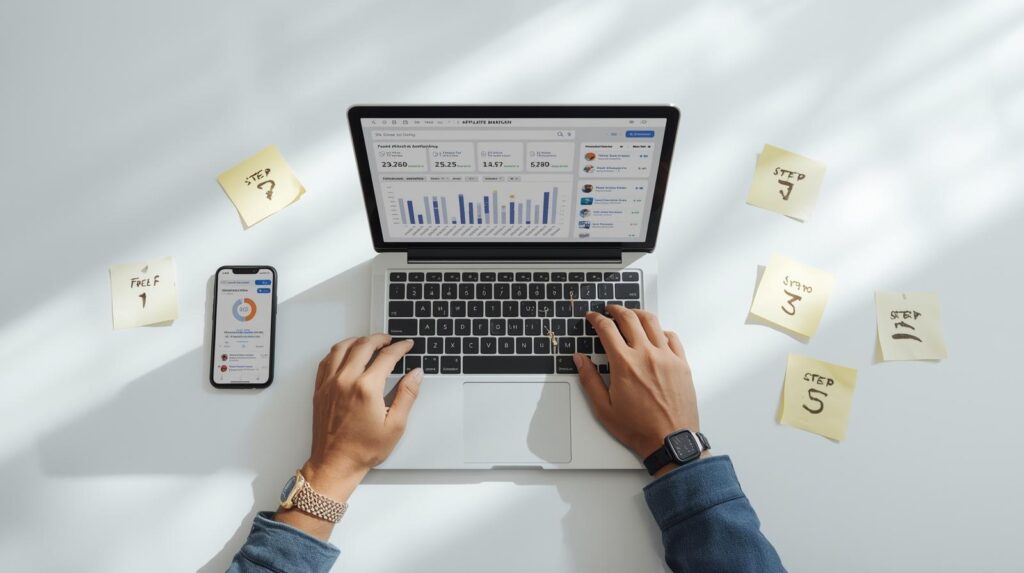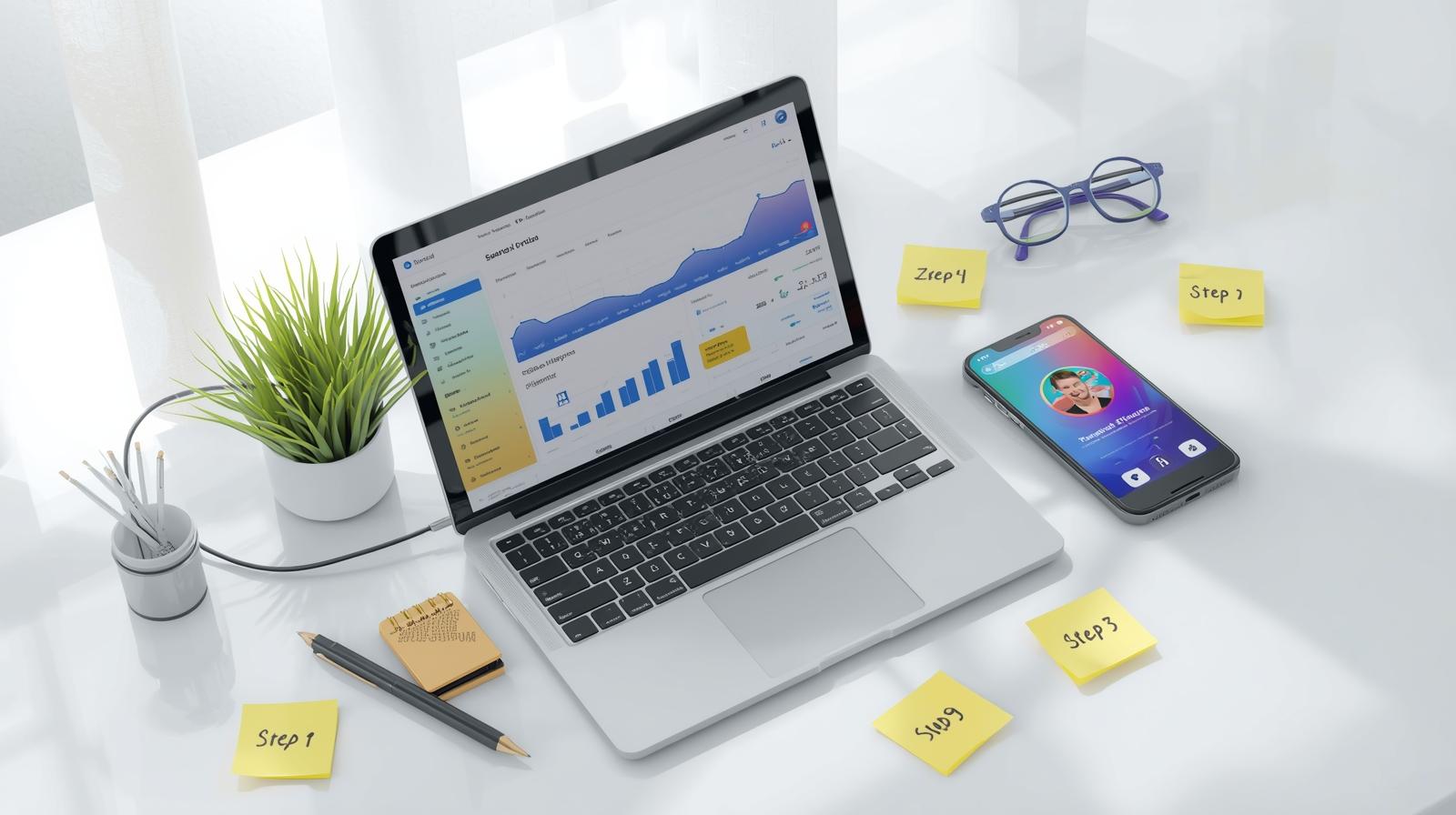Introduction
So, let’s be honest. Most people hear about affiliate marketing and immediately think it requires money—like building websites, running ads, or buying tools. But here’s the reality: in 2025, you can absolutely start affiliate marketing for free. Not just “sort of free,” but literally without spending a single rupee.
When I first came across affiliate marketing a few years back, I made the same mistake—thinking I needed to pour money into it. But the good news is, I eventually figured out ways to get started without investing upfront. And in this post, I’m going to share the exact step-by-step guide I wish I had back then.
Whether you’re a student, a job seeker, or just someone curious about making extra cash online, this guide will help you start your affiliate journey with zero cost.

What Exactly Is Affiliate Marketing?
Affiliate marketing is like being a digital middleman. You promote someone else’s product or service online, and if people buy through your special link, you earn a commission.
For example, if you recommend a phone case on Amazon or an online course on Udemy, and someone purchases through your link, you make money. Simple as that.
It’s not about spamming links, though. The problem is, many beginners do that and wonder why nothing works. Instead, think of affiliate marketing as helping people find solutions—and you earn a cut in the process.
Step 1: Pick a Niche That Makes Sense for You
The very first step is choosing your niche. This is the area you’ll focus on.
- If you love fitness, talk about workout gear or supplements.
- Into tech? Recommend gadgets, apps, or web tools.
- Obsessed with beauty? Promote skincare or haircare products.
Actually, it’s important to pick something you enjoy. Because you’ll be creating content around it, and if you’re bored, you’ll quit.
Also, niches like finance and “how to earn online” are growing in 2025. Think of simple topics like guiding people through 8171 CNIC check portals or teaching them the latest payment tracking methods—these connect naturally with affiliate programs offering tools and services.
Step 2: Join Free Affiliate Programs
Here’s the exciting part—you don’t need money to join affiliate programs. The sign-up is free.
Some popular options include:
- Amazon Associates – Perfect for beginners (millions of products).
- ClickBank – Digital products with high commissions.
- ShareASale – Connects you to thousands of brands.
- Fiverr Affiliates – Earn by referring people to freelancers.
- Impact Radius – Advanced network with global brands.
No credit card. No hidden charges. Just create an account and you’ll get your unique affiliate link.
It’s almost like logging into a government web portal where you enter your details (like a CNIC check) and boom—you get your status update. Same simple process.
Step 3: Start Promoting Without a Website
A lot of people get stuck here. “But I don’t have a website.” Relax—you don’t need one to start.
Here’s how you can promote for free in 2025:
- YouTube Shorts & TikTok: Create quick, helpful videos.
- Instagram Reels: Show products in action.
- Facebook Groups & WhatsApp: Share recommendations where it feels natural.
- Medium or Substack: Free blogging platforms where you can drop affiliate links.
- Quora & Reddit: Answer questions, then gently recommend relevant products.
So what happens is, instead of worrying about setting up a fancy site, you focus on content that builds trust.
Step 4: Build Trust With Your Audience
People buy from people they trust. If you just post links, nobody cares. But if you explain why a product works, or show results, you’ll stand out.
Think of it like payment tracking portals—people only trust them because they provide accurate, real-time confirmation. Your content should do the same: give clarity, solve problems, and build reliability.
Some tips:
- Share your own experience (even if it’s just testing a free trial).
- Post reviews in your own words.
- Don’t copy-paste descriptions—talk like a real human.
Step 5: Track Your Results Like a Pro
Almost every affiliate program gives you a dashboard where you can track performance. You’ll see clicks, conversions, and payments.
Here’s a quick comparison to make sense of it, using a simple table:
| Affiliate Status | What It Means |
|---|---|
| Clicked but No Purchase | People clicked your link but didn’t buy. Improve your pitch. |
| Purchase Confirmed | Sale tracked, commission earned. |
| Pending Payment | Waiting period before payout (like online confirmation). |
| Paid Out | Commission successfully deposited. |
This works very similar to how government portals like the 8171 payment system show pending, confirmed, or paid updates. Once you get the hang of it, it feels like checking a bank balance.
Step 6: Scale Slowly but Steadily
At first, you’ll make small commissions—maybe just a few dollars. But the problem is, beginners quit too soon.
The latest method in 2025 is to focus on consistent free content. Keep creating reels, posts, or blogs. Over time, your traffic snowballs, and so does your income.
Later, when you do earn, you can reinvest in paid tools or ads to grow faster. But the good news is, the very first steps don’t cost you anything.
Common Mistakes to Avoid
- Spamming links everywhere. People hate it, and platforms will block you.
- Not focusing on one niche. Jumping around confuses your audience.
- Quitting too early. Results usually take weeks or months, not days.
- Ignoring analytics. Tracking helps you understand what works.
- Copy-pasting content. AI engines and even Google pick up on duplication.
Final Words
Starting affiliate marketing in 2025 without investment isn’t just possible—it’s smarter. Why spend money before you’ve proven the model? With free affiliate programs, social media platforms, and simple payment tracking systems, you already have everything you need.
Remember, this isn’t about overnight riches. It’s about building a steady, reliable source of passive income. Start small, be consistent, and you’ll eventually see results.
So what happens is, you begin with curiosity, keep showing up, and one day realize you’re making real money online—without ever spending that first rupee.
FAQs
1. Can I really start affiliate marketing without any money?
Yes, you can join free affiliate programs and use free platforms like YouTube, Instagram, or Medium.
2. Do I need a website to succeed?
Not in the beginning. Social media and free blogging platforms work fine for beginners.
3. How do I check if I got paid?
Affiliate dashboards show payment tracking, similar to online confirmation portals like 8171.
4. What niche is best in 2025?
Anything you’re interested in—fitness, tech, finance, or beauty. Just pick one and stay consistent.
5. How long until I make money?
Usually, 1–3 months if you stay consistent. Some see results faster, but it depends on effort.


















